In the West, over the course of a few centuries, people have progressively rationalized, studied and decomposed the act of drawing as a collection of primitive skills. Learning to draw is then a matter of mastering such sub-skills individually, and understand how they interact with each other.
For instance, reproducing what you see could be one skill, composing an other, and by combining the two, you could alter your visual perception to answer specific æsthetical criteria, which is a key aspect of realism, and a reason why realism differs from photography: the greatest paintings are better than life.

Among the Sierra Nevada, California, oil on canvas, 1868
by
Albert Bierstadt
Regarding Bargue’s course, many of those sub-skills are silently taught, entangled with each other. It’s interesting to note that, some of the skills may become more or less developed, more or less consciously, depending on the student’s curiosity and critical thinking. A good teacher should be able to perceive students’ issues on specific sub-skills, and to help them to train more efficiently.
We’ll rely many times on the following early plate in this section. Despite its apparent simplicity, it’s a wonderful teaching tool. We encourage the reader to take the time to look at it in detail before diving further.
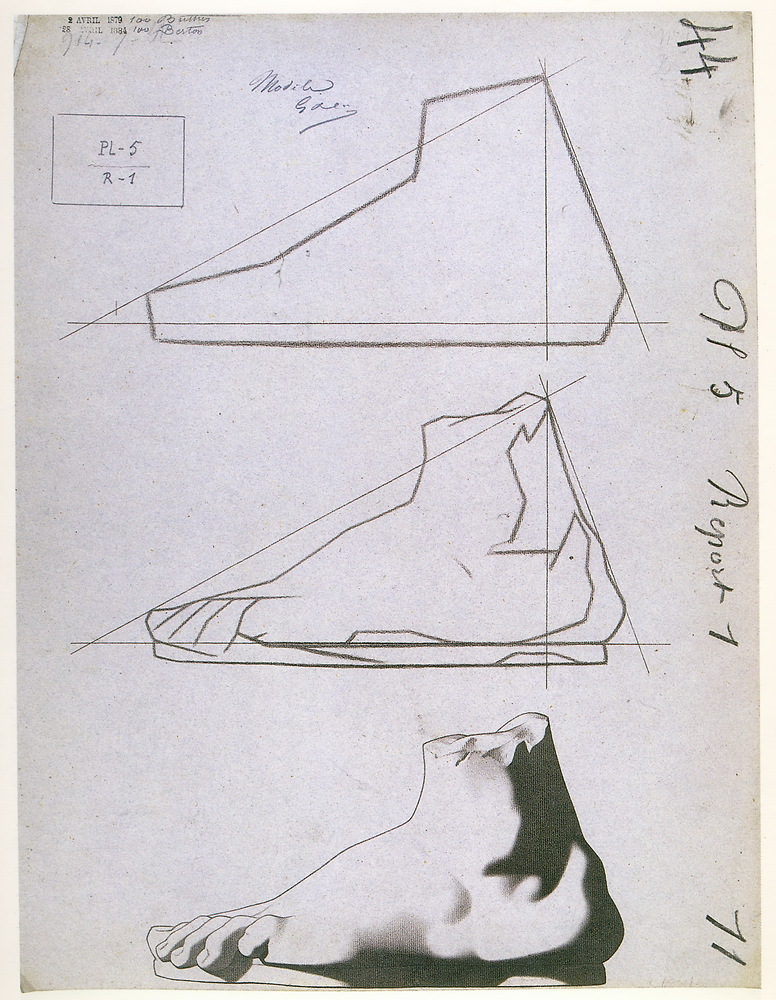
Plate I 5, Profile of a foot
by
Charles Bargue
Blocking-in: proportions framework, placing the drawing.
As demonstrated on early plates, Bargue proposes a way to block-in the figure through a few straight lines, which can be refined as needed. The block-in has two main goals:
- Place the drawing on the sheet;
- Establish general proportions, main masses.
This is also at this stage that plumb lines and horizontal alignments lines can be used to help check for accuracy. For more, have a look at Da Vinci Initiative’s video series.
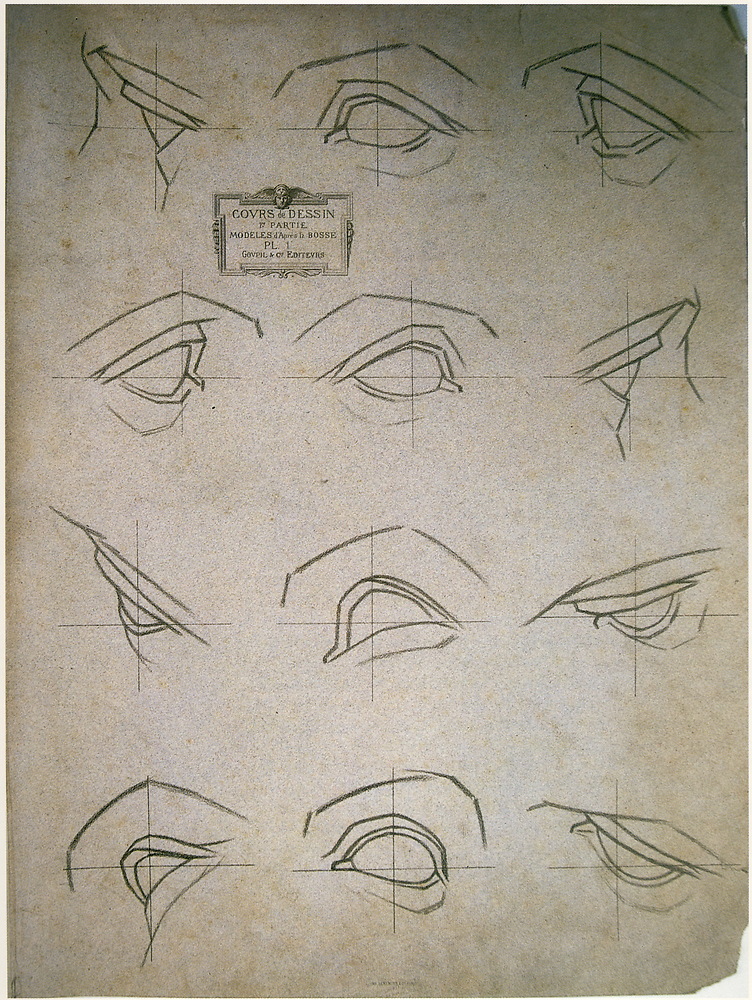
Plate I 1, Eyes
by
Charles Bargue
Note: We argue elsewhere that this kind of block-in is actually an optimized grid system, a conceptualisation that can be helpful for people having difficulties to give up on grids.
Note: Those block-in, despite being highly simplified, are not purely linear: so-called “T-lines”, heavily used in cartoons and animation, are used to indicate volume overlapping.
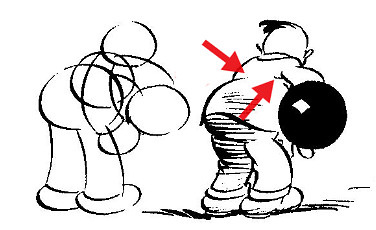
Examples of T-lines to indicate volume overlap, from Cartooning Self-Taught (1936)
by
Bill Nolan (1894 - 1956)

First appearance of Mickey Mouse, in Steamboat Willie, 1928
by
Walt Disney (1901 - 1966)
A drawing process, a painting process
Most plates start with a block-in, such as previously described, eventually refined. It is then to be continued with shading/rendering.
Note: The process is sometimes articulated more finely; see for instance Dorian Iten’s How To Draw What You See guide, relying on a Bargue plate. For the purposes of this article, simplifying it in two steps is enough.
This two-steps process aims at ensuring the main proportions are decent before diving in the rendering/shading, so that in case of major proportion mistakes, we merely have a few lines to erase and replace, which requires considerably less effort than moving patches of tone. This is also gentler to the surface, as the medium can tint it, and erasing could progressively damage it.
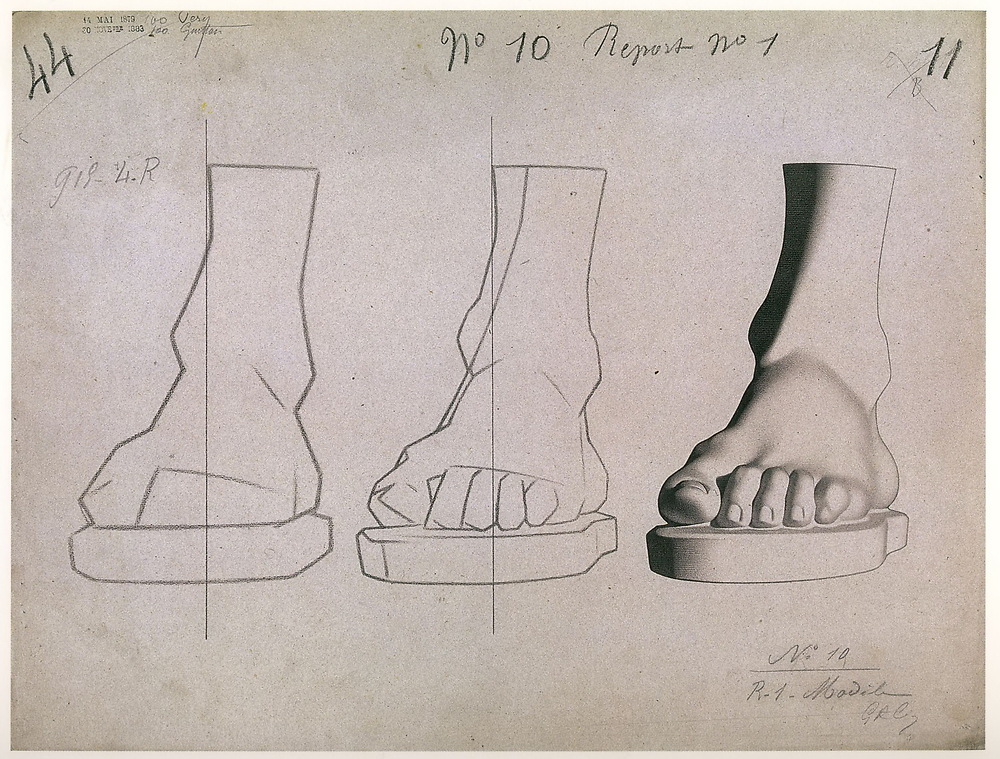
Plate I 10, Foot of Germanicus
by
Charles Bargue
Note: Those issues are typically removed when using digital software to its full extent rather than traditional materials. Thus, note how the use of digital software, while it can speed up the creation process, can actually hinder the learning process. Think, the use of proof assistants for mathematicians, playback or voice distortion systems for live performers, etc.
We can also see a clear distinction in finesse as we go through the course: some plates are kept very simple, while others are more refined. Actually, those simpler plates can be conceptualized as intermediate steps in the creation of more refined plates, for instance, starting by clearly separating lights from shadows and the edge between them. See below the differences between the first and perhaps simplest foot plate and the last and most refined foot plate; the first one, our main example plate, could be refined further. So does the second actually, compared to most advanced plates of the course.
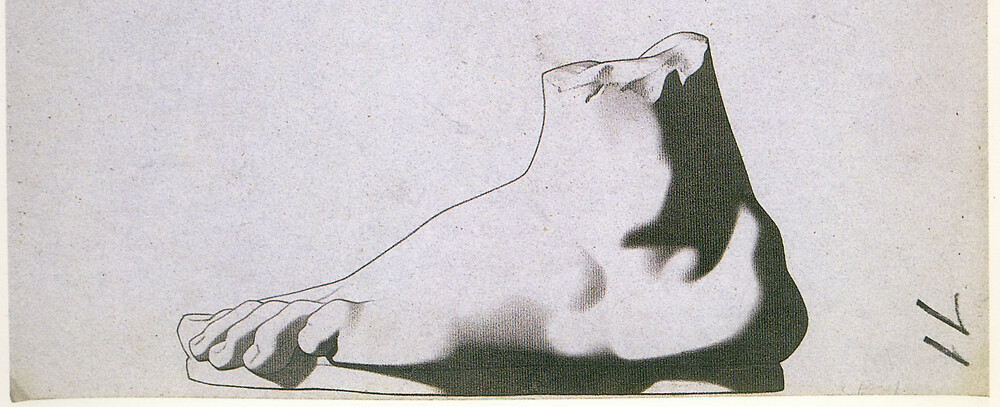
Plate I 5, Profile of a foot, cropped
by
Charles Bargue
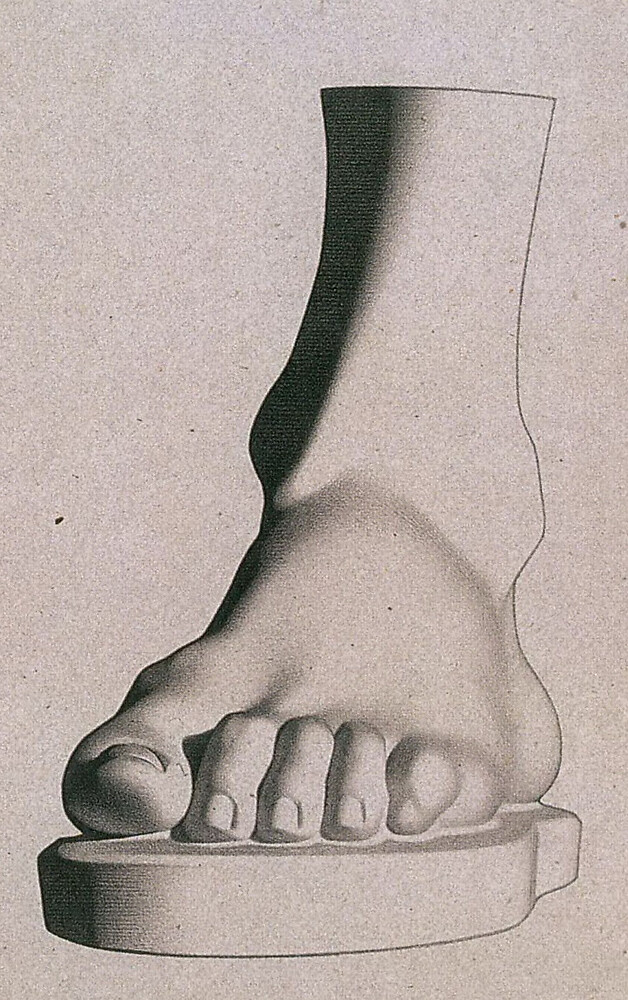
Plate I 10, Foot of Germanicus
by
Charles Bargue
Note: The simplification process often matches what one perceives through squinting: this allows to focus on the visual essence of what one tries to reproduce, what should be there first. It also helps to better evaluate the value differences between areas. Squinting really is a key “habit” to take for a young artist.
Note: That process is also used by some oil painters working in layers: they will start with a block-in drawing, followed by an underpainting with low-chroma colors, focusing mostly on light and shadow distinction, and will progressively refine that initial design, layer after layer, using more and more chromatic colors.
Projecting form on the flat
Let us recall our example plate, and let’s compare it one of the most finished plate of the course:

Plate I 5, Profile of a foot, cropped
by
Charles Bargue
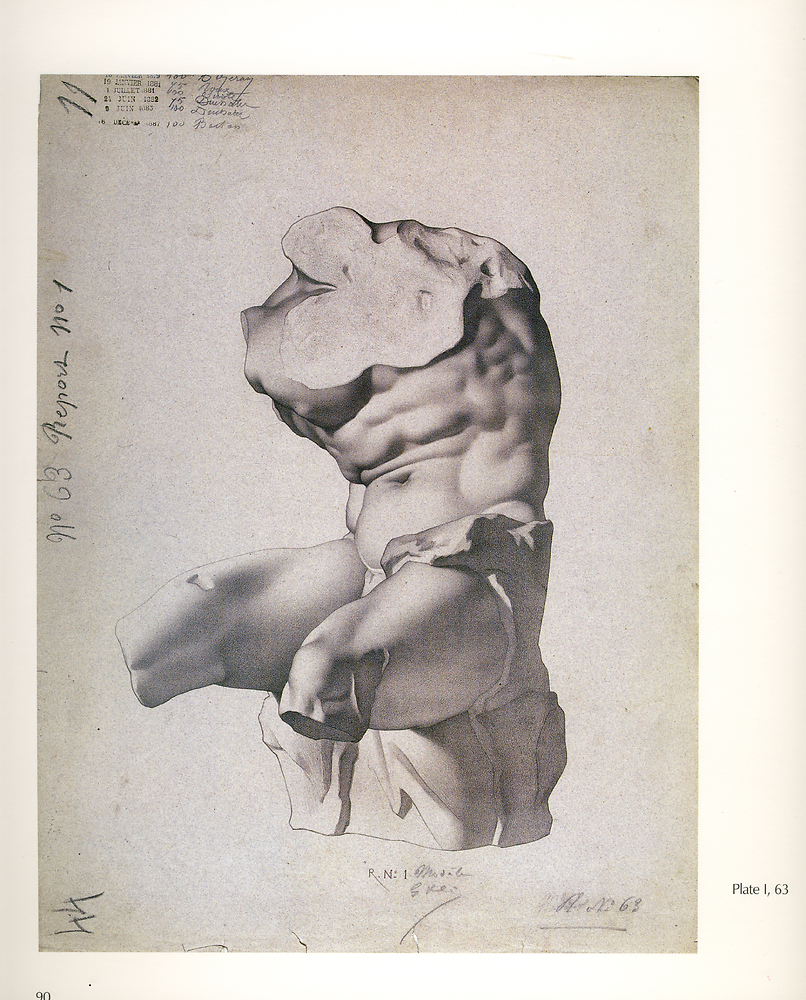
Plate I 63, Belvedere torso, front
by
Charles Bargue
Look how abstract those patches of tone are on the foot plate, by comparison on how concretely the form is rendered on the torso. It’s a by-product of the simplification process, where basically, the number of values (dark/light levels) in the light area is limited.
One key side effect is that it helps the students to perceive things precisely as abstract, flat, 2D shapes. This is one sub-skill that Betty Edwards trains through her book Drawing on the right side of the brain, for instance by having students copy drawings such as the one below:
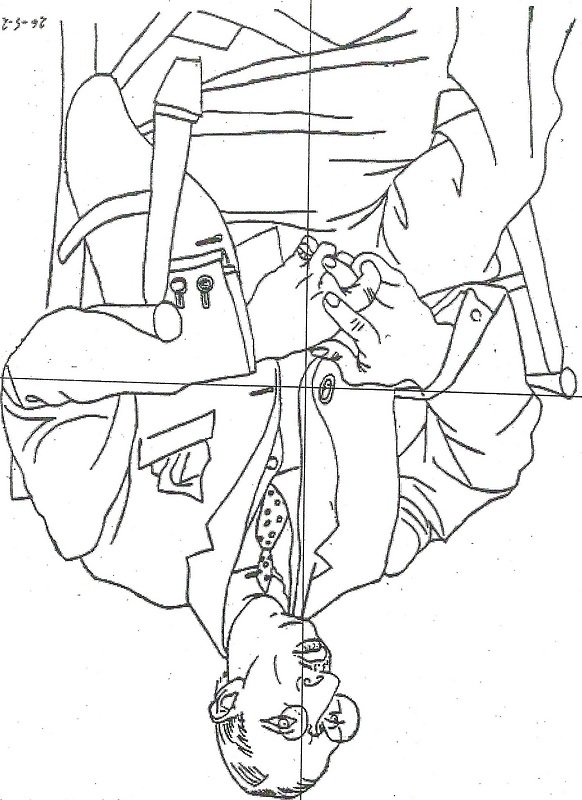
Portrait of Igor Stravinsky, Betty Edwards drawing exercice from her book Drawing on the right side of the brain, intended to be copied as presented to as to train student’s perception
by
Pablo Picasso
Besides being a key remedy for people affected by the symbol drawing syndrom, that mindset can also help eyeballing proportions, and is useful from a composition point of view: designing shapes is a great way for artists to compose.
Furthermore, if you peek in the following plates, you can then get a sense of what those shapes actually are caused by, as Bargue cautiously choose the plates so as to show you each body part under complementary angles:
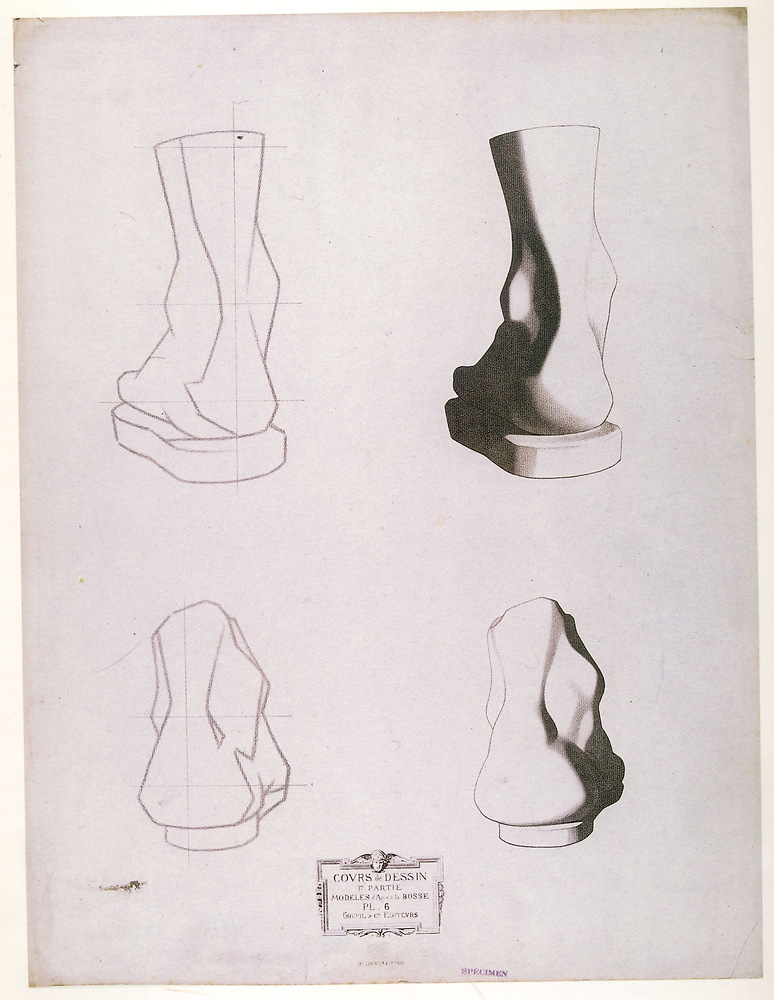
Plate I 6, Heels
by
Charles Bargue
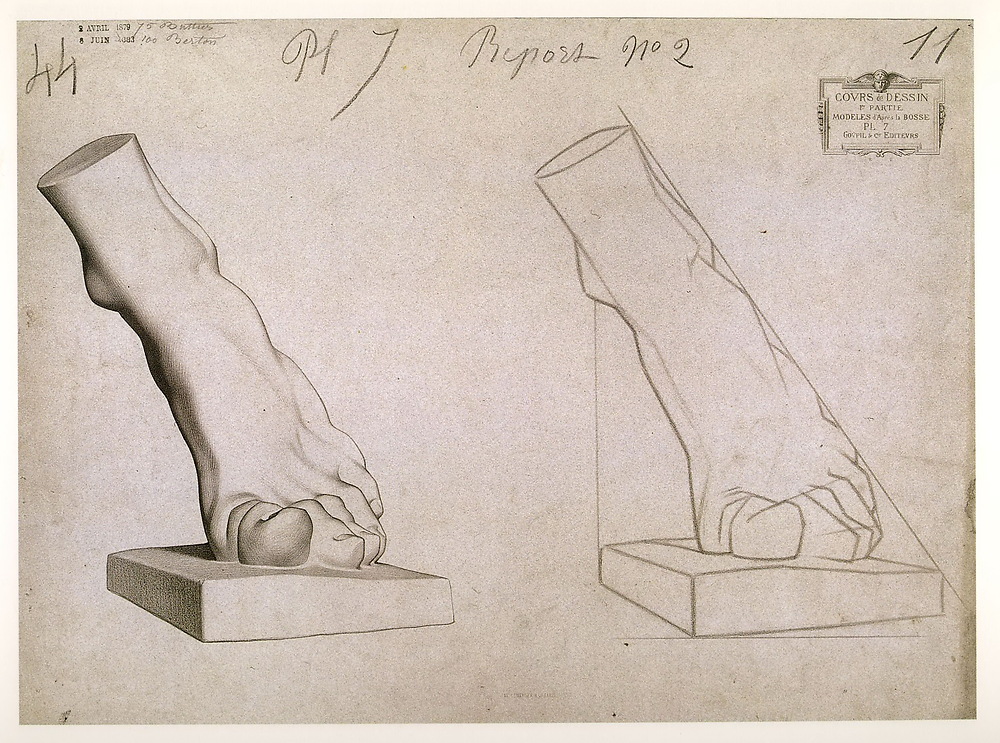
Plate I 7, The foot of the gladiator
by
Charles Bargue
Note: Correlating the volumes from a plate to another can be demanding, especially because of their abstract quality. This encourages students to project in their mind the drawing, and eventually, as shown with the 7th plate, how to bend it inside their mind’s eye so as to understand how it deforms when moving.
Emphasizing subtlety
Being subtle is a key skill for fine, realistic art: our eyes are extremely sensitive, much more than most non-painters consciously realize.
Beginners typically have under-developed eyes: they can hardly perceive subtle variations in tone/line, less replicate them. And when they can perceive them, they often tend to exaggerate them at first, before learning to express them with more finesse.
Going back to our example plate:

Plate I 5, Profile of a foot, cropped
by
Charles Bargue
The simplified drawing filters out noise and as a result, make subtle differences in values more apparent:
- looking at the toes, we can see that there are obvious differences in shadow values;
- this can lead the student to pay closer attention to the subtle differences in shadow: note how there are subtle variations under the middle of the foot on the stand; note also how the overall value is lighter than the shadow on the foot, top-right; the distinction is likely caused by light bouncing from the floor into the shadows: it won’t happen (as much…) in ceiling-facing planes;
- looking at the stand under the toes, we can see that there are subtle curves that were approximated by a straight line in the block-in; that variation actually reflects of a variation of volume. On more advanced plates we can clearly observe the correlation between contour lines variations and subtle values shift on the form;
- note how varied the edge between the light and shadow shape is, and how the patches of midtone can help emphasize that distinction to the student; edges aren’t incidental, nor should be neglected: they inform the viewer on how much the form turns in space.
Note: Such subtleties are likely to go unnoticed by self-taught beginners that aren’t trying to get a perfect replica, hence why, despite the poor artistic qualities of the technique, aiming at a highly accurate replica for self-taught beginners is an excellent exercise. See below the difference between an early Bargue plate (c. 2018) and a later one (c. 2021):
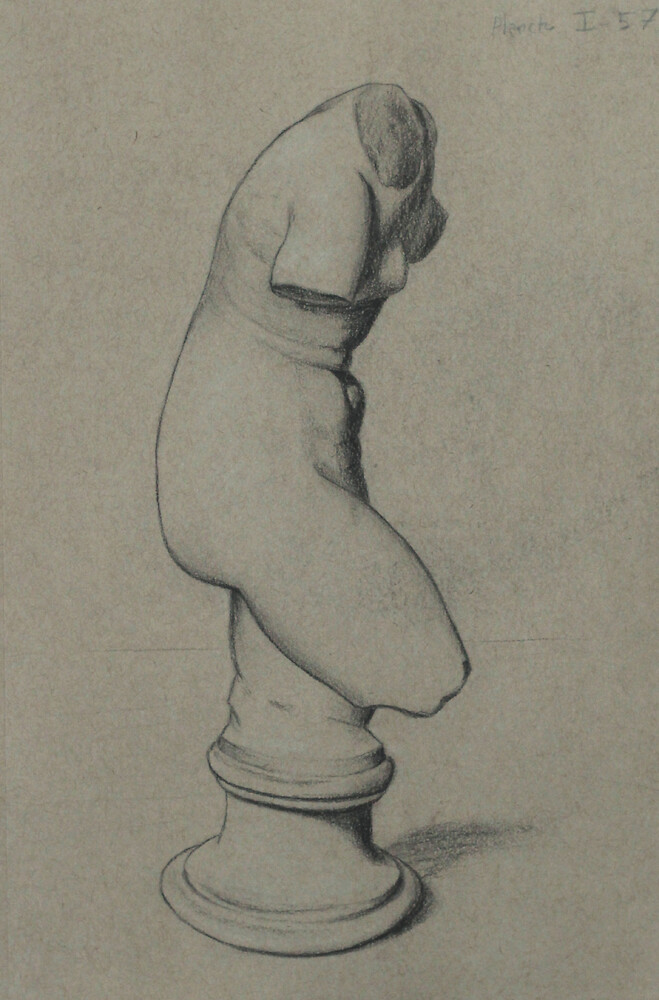
Plate I 57, Female torso, three-quarter view, Pierre noire on paper
by
M. Bivert
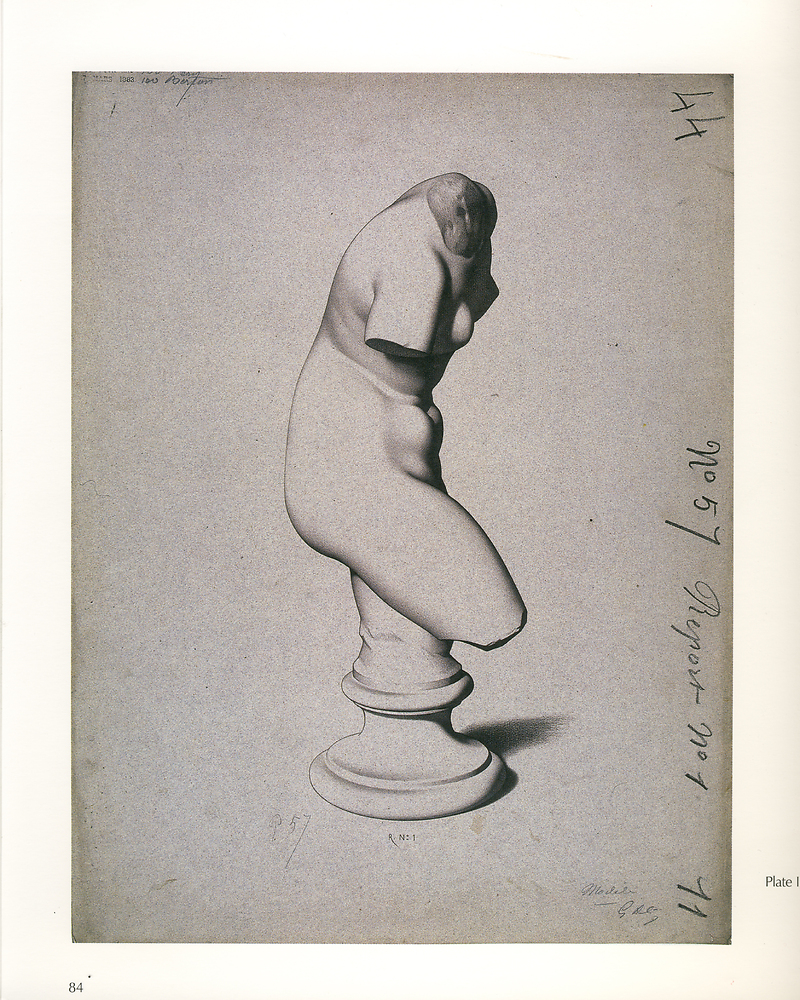
Plate I 57, Female torso, three-quarter view
by
Charles Bargue
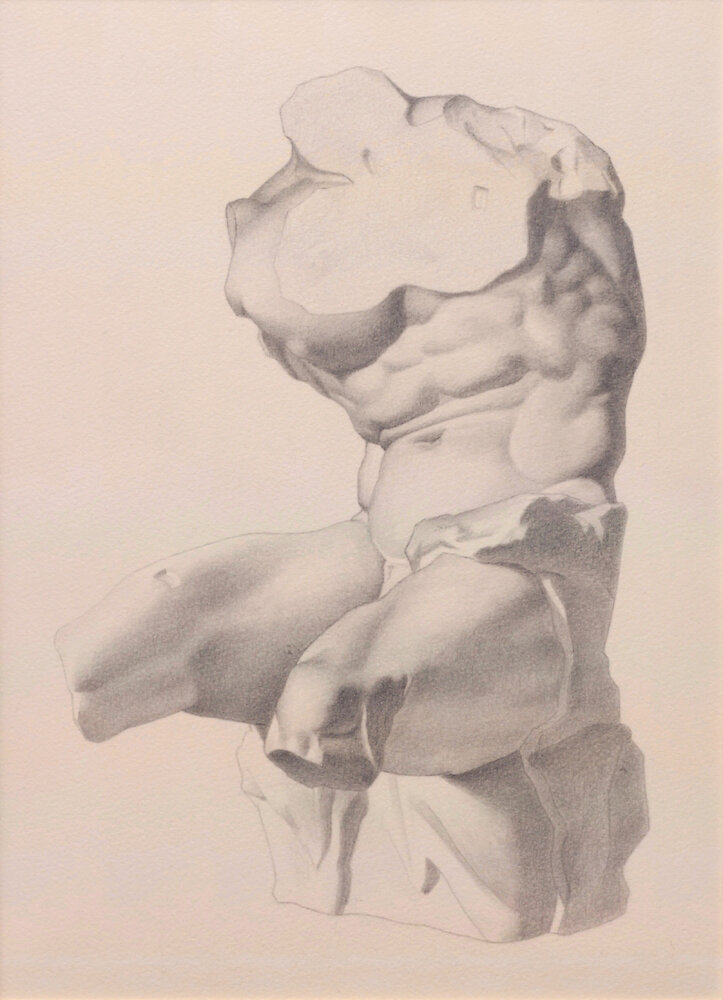
Bargue Plate I 63 master copy, graphite on Arches Velin crème, 100% cotton
by
M. Bivert

Plate I 63, Belvedere torso, front
by
Charles Bargue
If the quality difference is not obvious to your eyes, try opening the images fullscreen. If still it’s not perceptible, your eyes aren’t developped enough.
Material control
Charcoal or graphite are typically used for Bargue plates: graphite being the easiest to control often gets recommended for beginners, despite its inability to get really dark as easily as charcoal.
Simplified plates have nearly uniform patches of tone. The ability to make a uniform patch of tone of a given value is an exercise on its own, and can prove rather difficult for beginners.
It requires fine handling of one’s material. Edges, which in essence are small, often narrow patches of tone, are difficult to master because of their size: this requires either some specific order of operation, fine erasing, or extra fine-point material.
Mark-making
As this is poorly represented by our foot plate, let’s consider those two, paying attention to the stand of the first one, the hatching on the leg and the texture of the broken part in the second one:
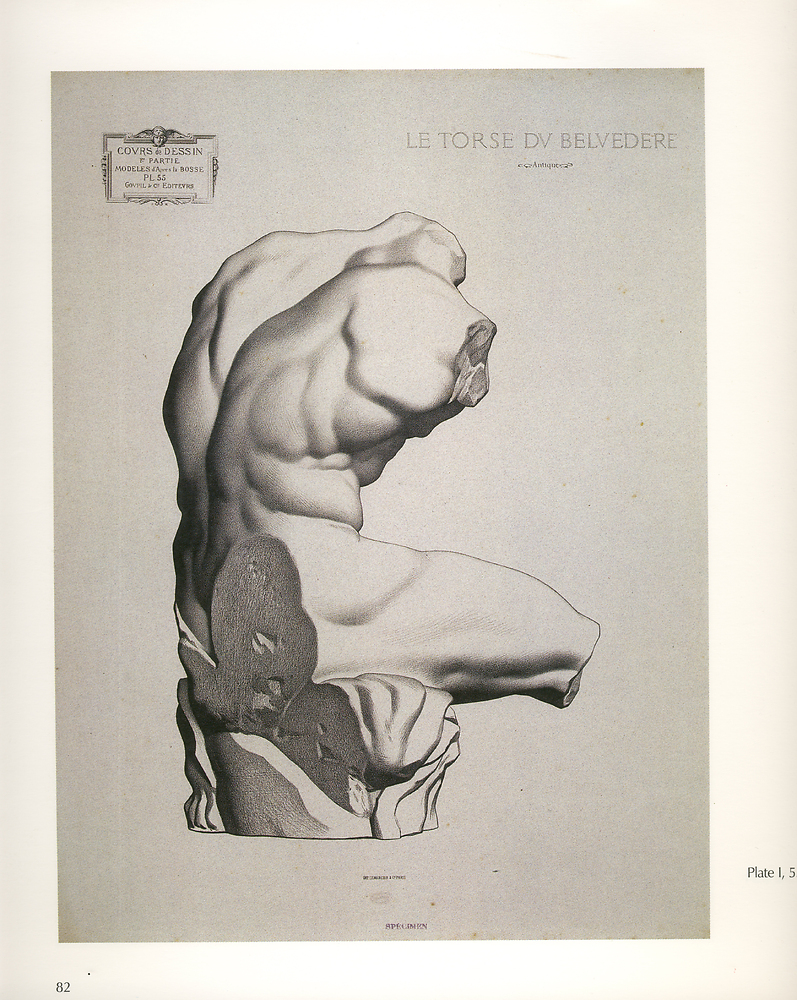
Plate I 55, Belvedere torso, rear view
by
Charles Bargue
Closely related to material control, Bargue progressively introduces the students on what we could call mark-making, that is, not just relying on smooth, uniform patches of tone, but using strokes, hatching, texture, etc.
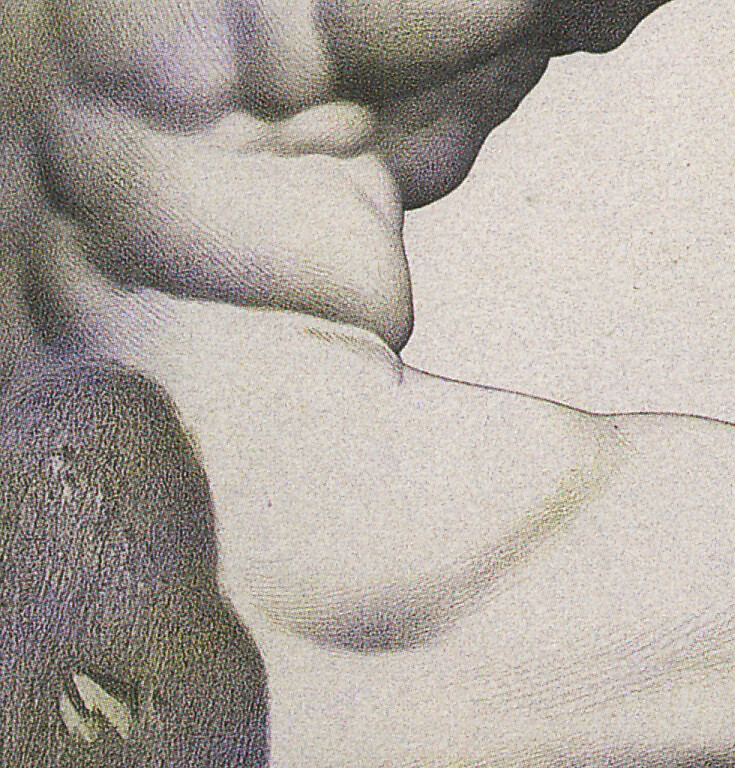
Plate I 55, Belvedere torso, rear view, close up view
by
Charles Bargue
Achieving uniform patches of tone is a difficulty in itself, but using regular hatching to describe form, while making it appealing, is a whole new world. This is one reason why Bargue’s course is popular for beginners, compared to others, perhaps best exemplified by Gerald M. Ackerman’s comparison of Bargue and Julien’s rendition of an old Roman bust of Homer in the course’s preface:
A direct comparison of the Homer (Homére) by Julien (fig. 3) and the one by Bargue (fig. 4) more clearly reveals the different approaches of the two courses. In both the drawing is excellent, tight and accurate. However, the proliferation of hatching in Julien’s example confuses the relationships of the various volumes of the face. Bargue works tonally, logically progressing from light to dark. The result is a greater range of value from black to white, providing more drama, unity, and volume. It’s almost as if Julien were emphasizing the decorative aspects of the antique bust as opposed to Bargue’s stress on the sculptural qualities.
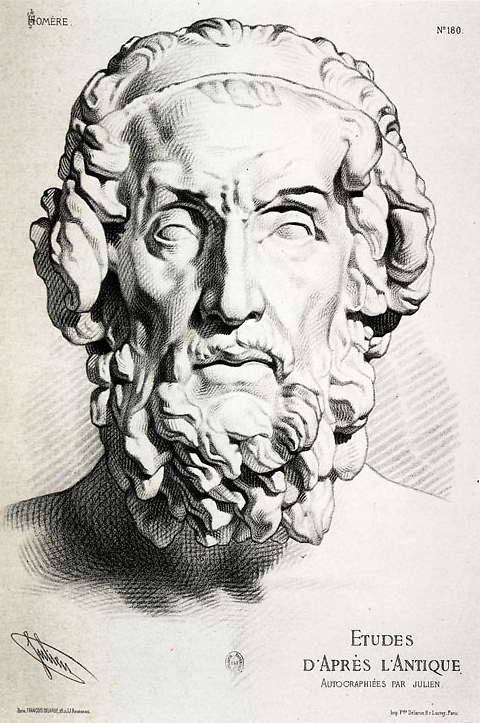
Homer, from a Roman marble bust
by
Bernard-Romain Julien
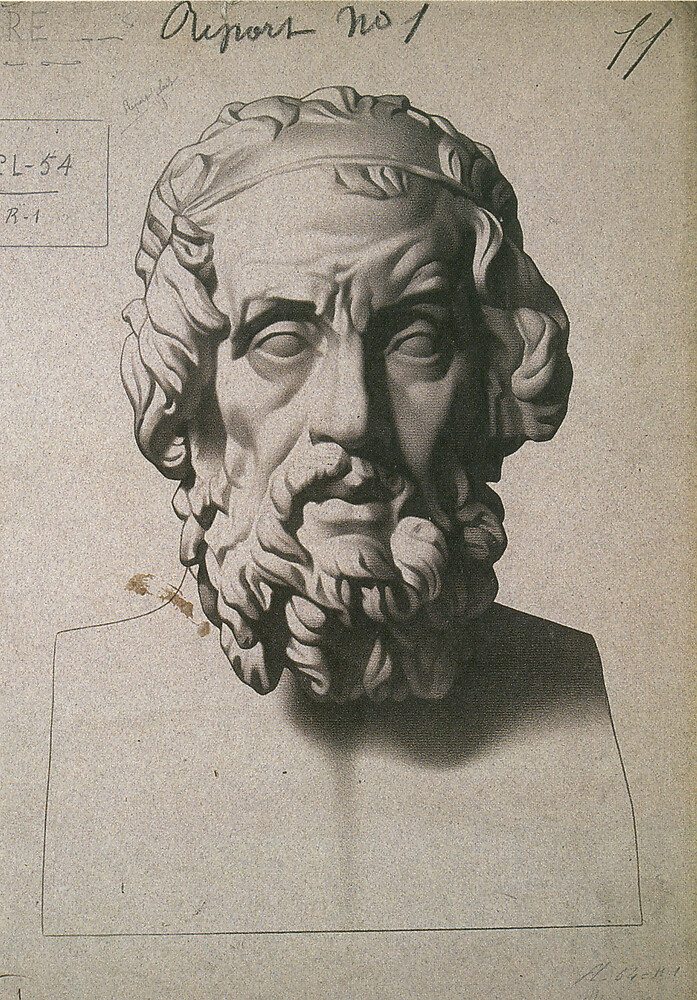
Plate I 54, Homer, cropped
by
Charles Bargue
Note: Mind the slight differences in proportions between the two drawings: for instance, the eyes are narrower on Julien’s. Having a 100% accurate copy doesn’t seem to have been a major goal back then, getting something aesthetically pleasing and “accurate enough” and true to the model’s spirit seems to have been what truly mattered.
Note: Julien also authored a drawing course, consisting of a series of plates. A set of plates related to the human face can be found on archive.org, often displaying a masterful control of hatching. Hatching-based drawings can also be found in the second section of Bargue’s course.
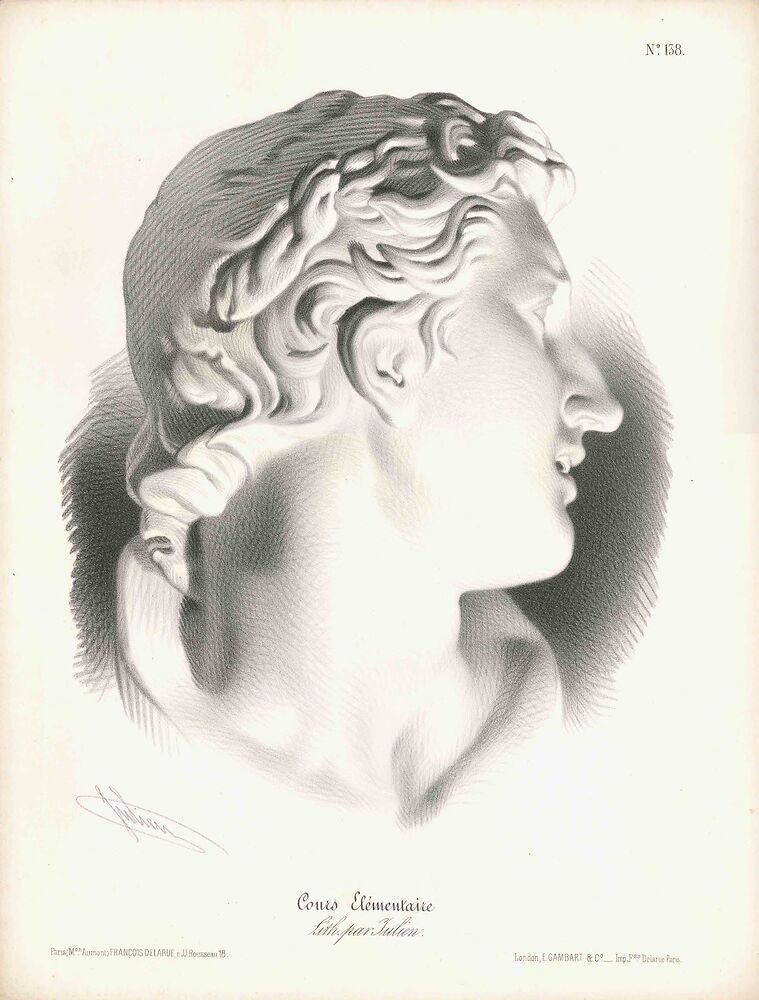
Plate from the Cours élémentaire de dessin
by
Bernard-Romain Julien
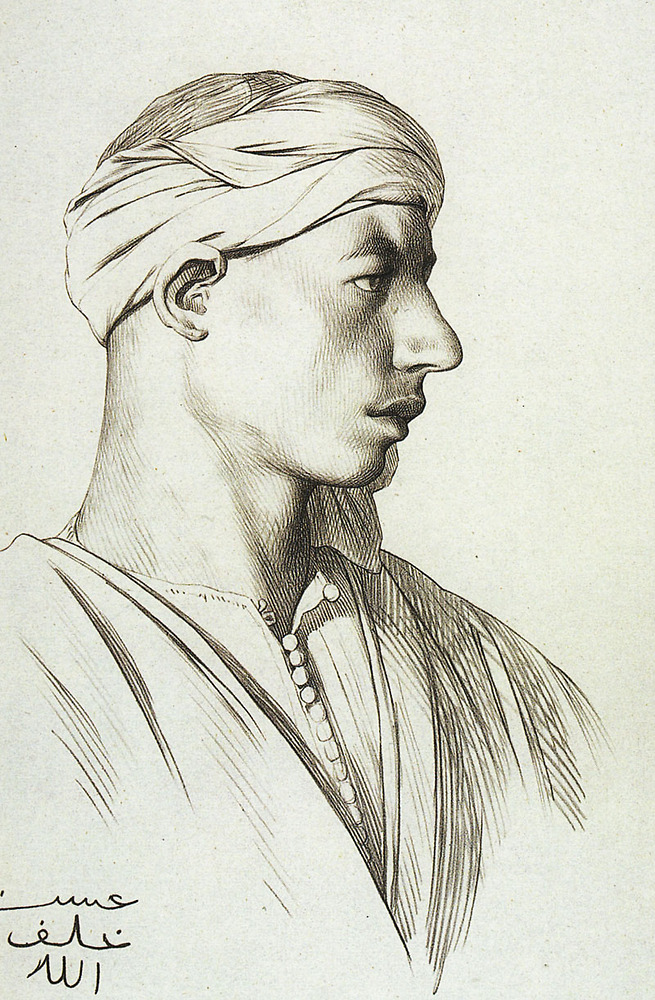
Plate II 14, Head of a Fellah, profile, drawing from Jean-Léon Gérôme
by
Charles Bargue
Simplicity, simplification of form
Throughout the course, Bargue uses simplification in many way, whether it is as a temporary measure during the block-in, where small lines variations are absorbed by a single, wide straight line, or regarding the simplicity of the rendering produced by omitting some values.
That simplification process isn’t new, and was already practiced in Antiquity among the Greeks and Romans, including many of Bargue’s plates’ models. For instance, the volumes of the Ares Borghese depicted below are very geometrical, far from realistic volumes:
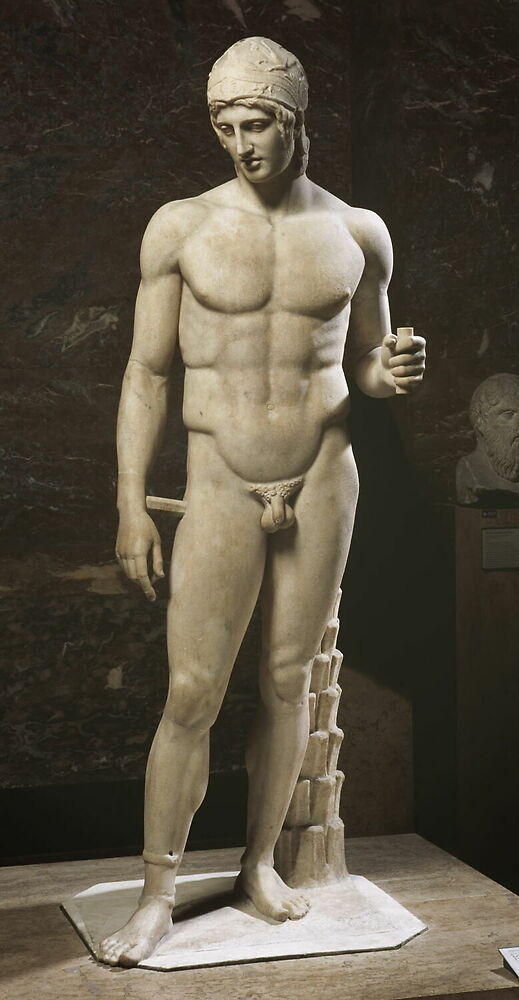
Ares Borghese, marble, 1st or 2nd century AD, 2.11m high
by
Alcamenes
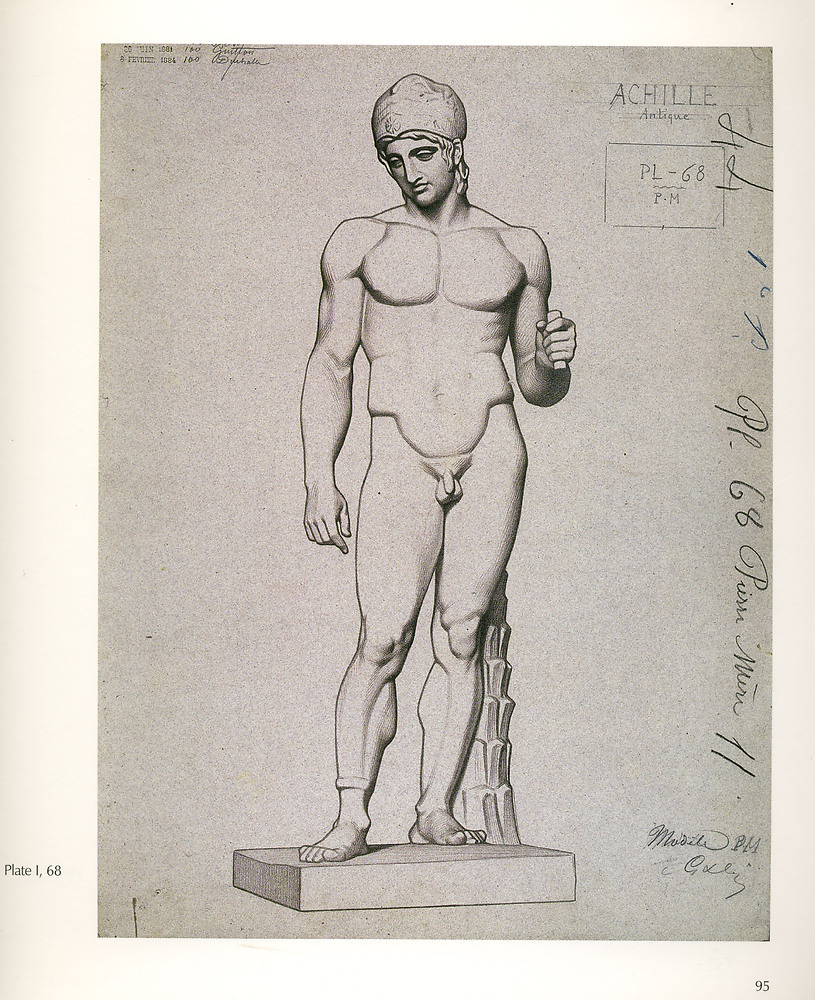
Plate I 68, “Achilles”, now thought to be Mars/Ares, see Ares Borghese and the Louvre’s page
by
Charles Bargue
Note: That simplification process can be correlated to ancient Greeks’ fascination for geometry: Platonic solids were for instance associated to the four elements and thus supposed to be at the root of matter. Note however that such processes has been discovered to lesser degree by Hokusai, as far as I know independently, in Japan, where such a fascination for geometry doesn’t to be as deep as it is in the West, and were, because of its link with calligraphy, visual art has often been more oriented on brush usage.
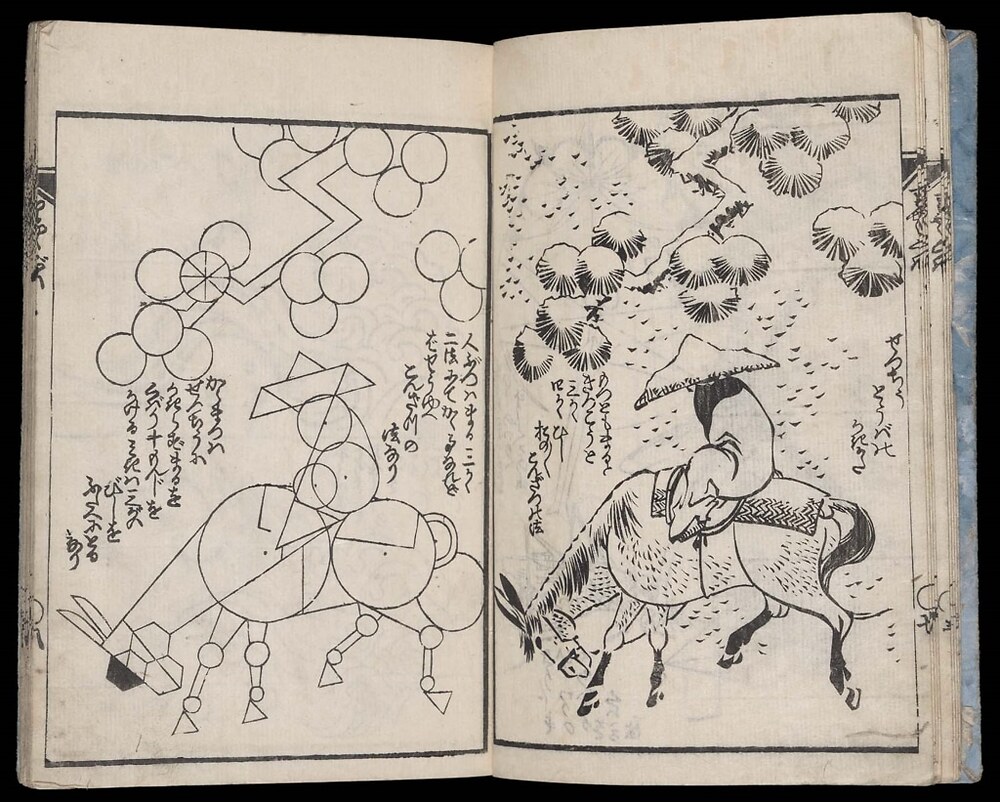
Drawing lesson by Katsushika Hokusai (1760-1849) 葛飾 北斎 through sessions.edu – Public domain
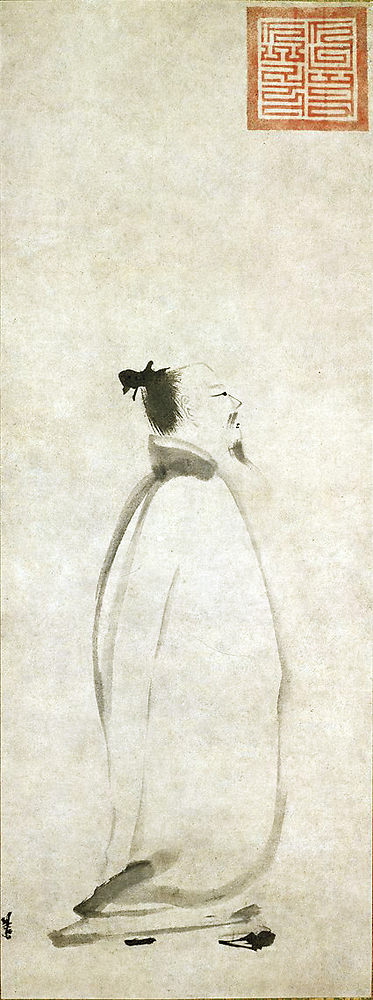
Li Bai (李太白) in stroll Song dynastie, 13th century by Liang Kai (1140-1210) 梁楷 through wikimedia.org – Public domain
Setting aside theological digressions, simplified volumes are practically useful to painters for multiple reasons:
- they help to better understand how light interacts with complex, organic material;
- they can be used to stylistically design all kinds of subjects;
- they are easier to memorize: not only can they be used to train visual memory (we’ll survey that topic shortly), but they can also be used as a first step toward designing, inventing more complex, organic forms, like a face from a cube, an egg, or a set of planes.
Note: Simplifying things also bears a practical aspect: you might need less time from a model which can be constraining (museum, model sitting time, camera’s lenses distortion, etc.) by capturing the essence of things, and building up on this later on, for instance with a good anatomy book.
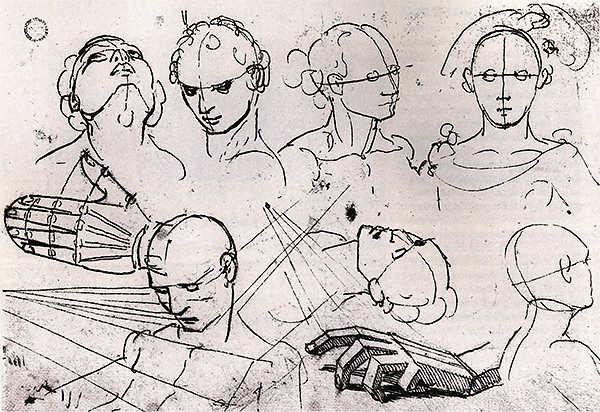
Sketches of heads and hands
by
Hans Holbein the Younger (c. 1497 - 1543)
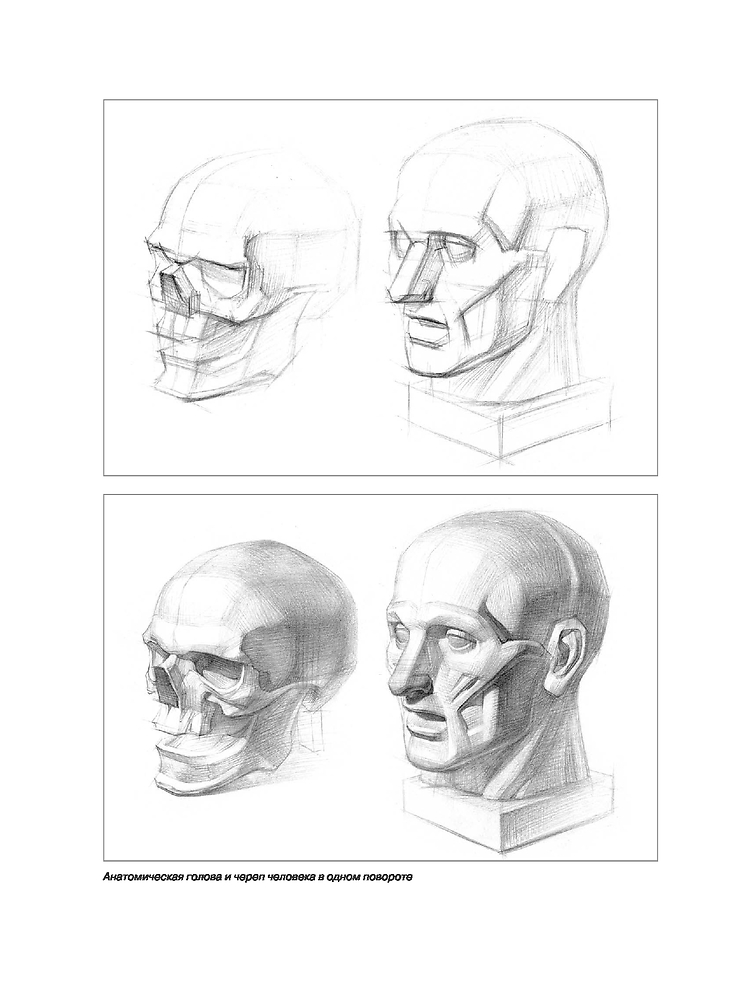
Академическое обучение изобразительному искусству, p204, showing typical emphasis on planes and anatomy in contemporary fine art Russian academy by Шаров В. С. – likely, available for fair use
Bon-goût, composition, lighting, art history, diversity
Bargue’s plates main cause of existence was the lack of skill among new students; they were intended to help rectify such a state and teach them Bon-goût (good taste). From the courses’ preface:
The catalyst of the Bargue-Gérôme Drawing Course was an official controversy about how best to teach drawing to French students of design and industry. A Parisian exhibition of student work in 1865 by the Central Union of Applied Arts (Union centrale des Beaux-Arts appliqués) caused much consternation. Eight thousand drawings and sculptures by students from the art departments of public educational institutions had been put on display; officials and critics were united in decrying the exhibits as very poor in quality. Since early drawing education in the industrial and decorative art schools consisted mainly of copying after prints or casts, the general conclusion was that they had been given poor models.
At the exhibition’s awards ceremony the sculptor Eugéne Guillaume (1822-1905), director of the École des Beaux-Arts, verbalized his colleagues’ dissatisfaction: “The main ingredient of art is taste. On this account, we are afflicted by the weakness of the models that are called upon to develop it. To place before the eyes of beginners in our schools examples devoid of all ennobling sentiments, to have copied engravings and lithographs of a false style, of incorrect drawing, of schematic method—this amounts to the corruption of the taste of the nation; it makes the development of vocations impossible. These fundamentals of [art] instruction must be rigorously reformed.”’
Good taste manifests itself in two ways in Bargue’s course:
- the use of time-tested antique models, and more generally, of well-chosen models;
- despite the simplicity of the plates, they still are composed.
As far as composition is concerned, as an example, let’s look at one rule that is systematically applied in Bargue’s plates, but not, say, in the following drawing:
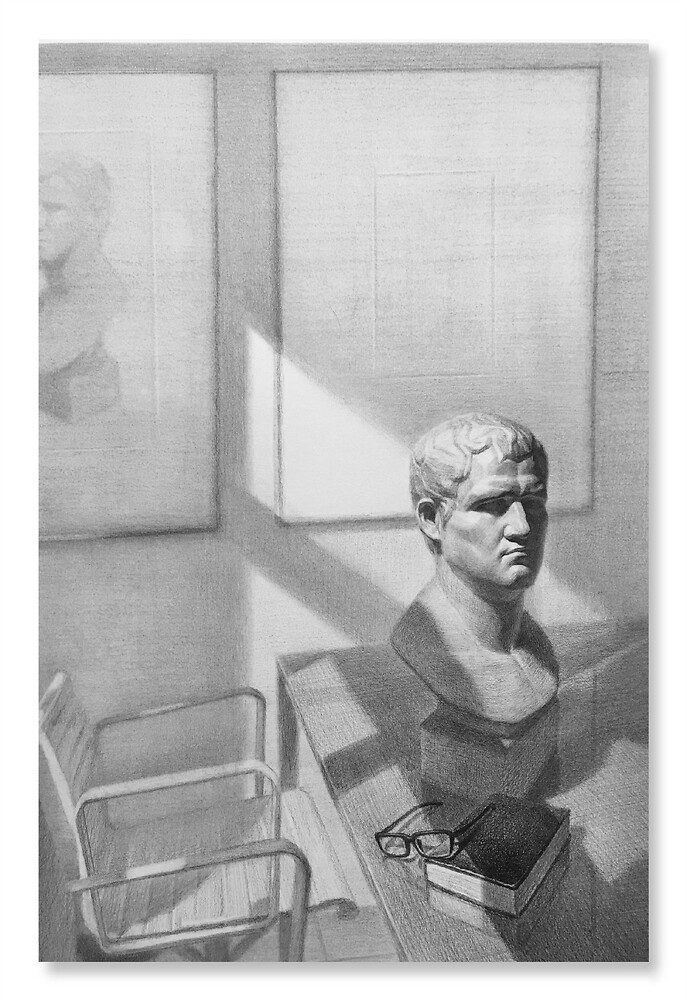
Cast on a table, from an online selection of drawing of a Chinese fine-art academy through ykpx.com – likely, available for fair use
Leonardo Da Vinci (1452 – 1519), centuries ago, already talked about how, when drawing from a model, one should be about three times away from the model as it the model is high, and to keep eyes on the model’s level. Far from being whimsical, the idea is that, a drawing will usually be hang on a wall, approximately at eye level, and observed from a distance.
With a drawing created with such constraints, the perspective lines located within the drawing will melt nicely with the “real” perspective lines as perceived by the viewer, outside the drawing. Which is one reason the previous drawing likely looks a bit off, despite its other qualities.
Of course, we could still balance things by lowering the previous drawing, putting it closer to the ground. That is, assuming it is of a reasonably small size.
Furthermore, the selection of Antique models, the diversity of resources for the second section, both are good ways to not only introduce the students to well-mannered masters, but to art history, and more generally, to history and culture. A few centuries ago, in strong theistic grounds, paintings were classified, ordered: the most celebrated paintings were “history paintings”, and were often inspired by historical or religious matters, the latter likely being a subset of the formers from the point of views of our ancestors (which would explain the category’s name).
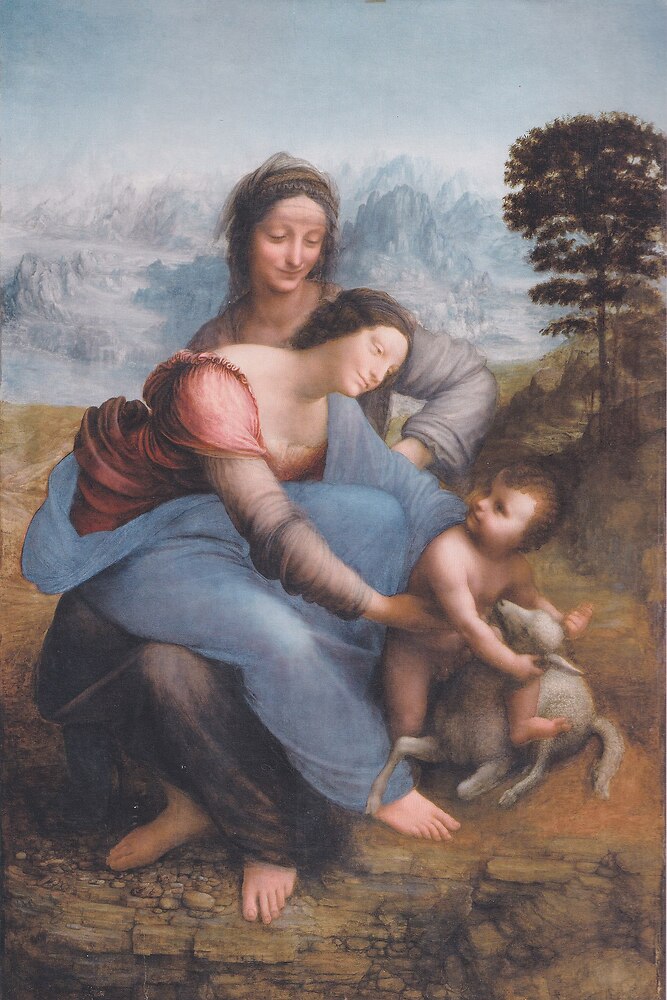
Saint Anne, Mary and Jesus as a child, 1503-1519, Paris, Louvre
by
Leonardo da Vinci
Finally, Bargue progressively shows the students the body from various angles, movements, degree of simplifications at various levels (from antique statues to death masks), ages and gender, which will develop the student’s ability to better appreciate diversity within a single subject, and the simplification models.
Towards casts
Bargue drawings can be, and often are used nowadays as an introduction to cast drawings. Themselves used as introduction to still-life or life figure drawings. When attempting to draw from casts, retrospectively, many choices and aspects of Bargue plates become more obvious.
For instance, one can appreciate Bargue’s effort to clean of superficial coloring, naturally present on marble or dusty/dirty plaster casts, so as to focus on extracting volume information from the noise. Or how, his habit of using straight-lines (incidentally?) helps reinvigorate old stones.

Plate I 63, Belvedere torso, front
by
Charles Bargue
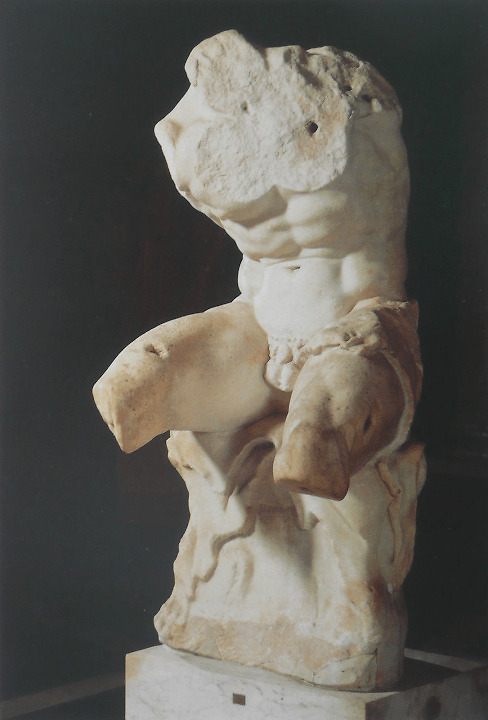
Belvedere torso, signed Apollonius son of Nestor, ca. 50 B.C. through http://www.ingetang.com/ – likely, available for fair use
Bargue plates can now serve as reference material toward how to extract a fine drawing from a cast. As we previously mentioned, they can also be used as references regarding how to lit and place the casts (composition), or how to interpret values perceived by the eye.
Comments
By email, at mathieu.bivert chez: